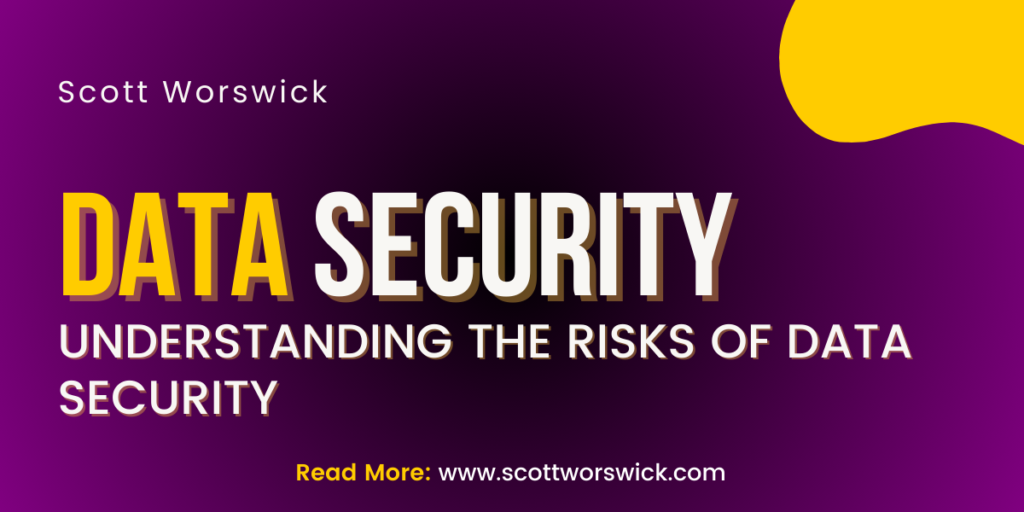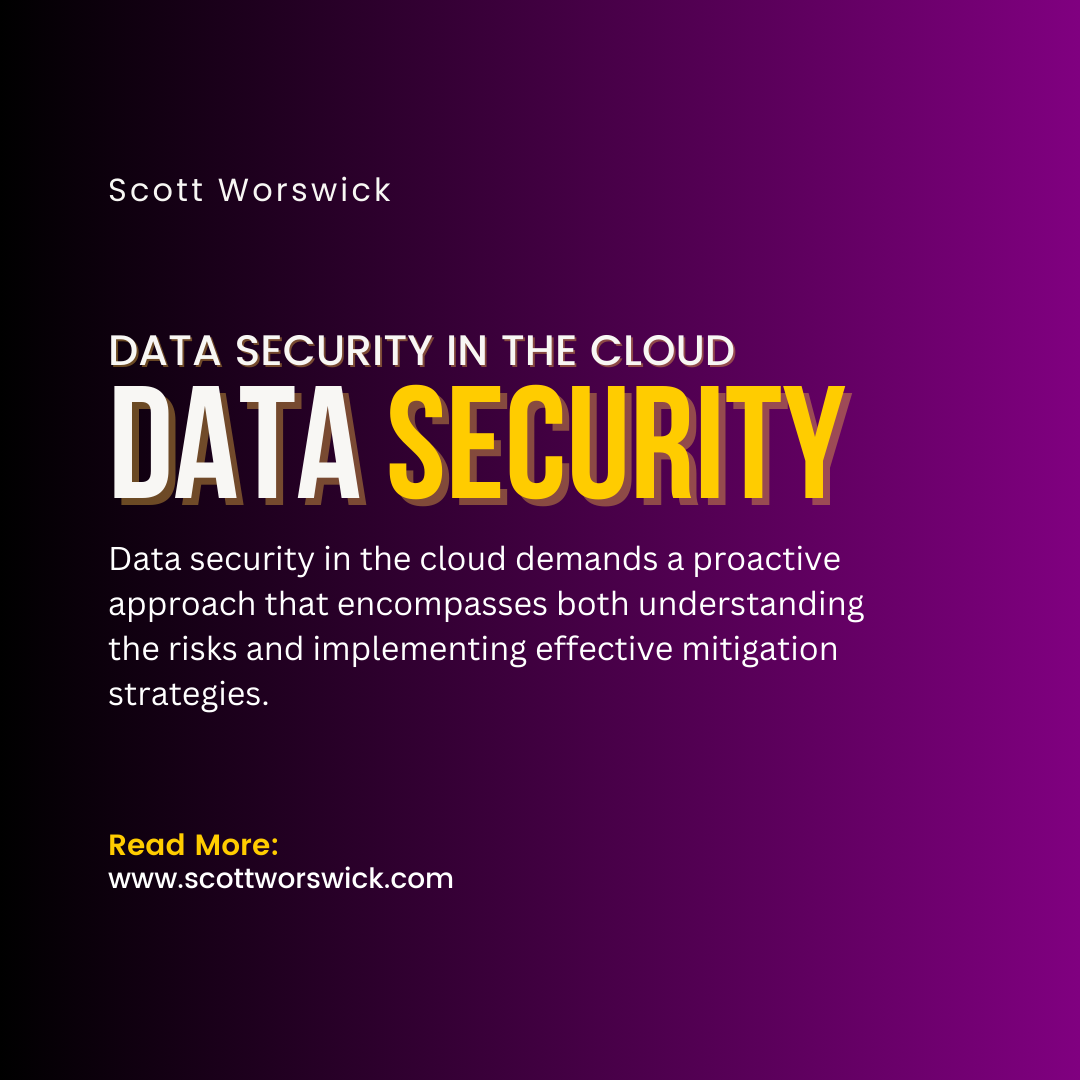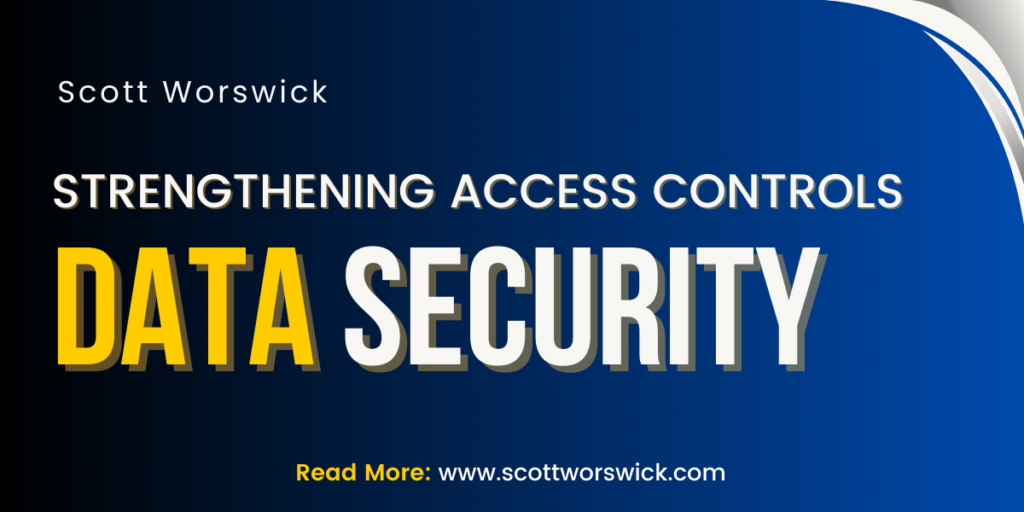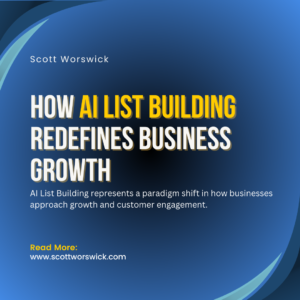In the fast-evolving landscape of digital transformation, businesses are increasingly turning to cloud computing to streamline operations, enhance scalability, and drive innovation. However, amidst the myriad benefits lie profound concerns regarding data security. As organizations entrust their sensitive information to cloud service providers, the integrity, confidentiality, and availability of data become paramount. In this era of heightened cyber threats and stringent regulatory frameworks, understanding the risks associated with data security in the cloud is essential for mitigating potential vulnerabilities and safeguarding critical assets.
The shift towards cloud computing introduces a complex array of challenges that can compromise data security. From data breaches and unauthorized access to regulatory non-compliance and data loss, organizations face multifaceted risks that demand proactive mitigation strategies. As data traverses networks and resides in remote cloud servers, ensuring its protection becomes a multifaceted endeavor requiring robust encryption protocols, stringent access controls, and continuous monitoring mechanisms. Effectively addressing these challenges necessitates a holistic approach that encompasses both technological solutions and organizational policies tailored to the unique requirements of cloud-based environments.
Despite the inherent risks, the cloud offers unparalleled opportunities for innovation, agility, and cost-efficiency. By leveraging advanced technologies and adopting best practices in data security, organizations can harness the full potential of the cloud while mitigating potential threats. As businesses navigate the complex terrain of digital transformation, prioritizing data security in the cloud becomes not only a strategic imperative but also a competitive advantage. In the following sections, we delve deeper into the various risks associated with data security in the cloud and explore actionable strategies for mitigating these challenges to foster a secure and resilient cloud environment.
Table of Contents
1. Understanding the Risks of Data Security

Understanding the risks inherent in data security is the cornerstone of establishing effective mitigation strategies, particularly in the context of cloud computing. One of the primary concerns lies in the vulnerability of data to breaches and unauthorized access. In the cloud, where data is stored and processed on remote servers, the risk of unauthorized parties gaining access to sensitive information is heightened. This risk is compounded by factors such as inadequate access controls, weak authentication mechanisms, and vulnerabilities in the cloud infrastructure. A breach of data security not only jeopardizes the confidentiality of sensitive information but also undermines the trust and reputation of organizations entrusted with safeguarding such data.
Moreover, data security in the cloud extends beyond the threat of breaches to encompass the risk of data loss. Whether due to accidental deletion, hardware failure, or malicious attacks such as ransomware, the loss of critical data can have far-reaching consequences for businesses. In a cloud environment, where data is distributed across multiple servers and locations, ensuring robust backup and recovery measures is imperative. Without adequate safeguards in place, organizations risk irreparable damage to their operations, finances, and brand reputation in the event of data loss.
Furthermore, the evolving regulatory landscape adds another layer of complexity to data security in the cloud. Organizations operating in various industries are subject to a myriad of compliance requirements, ranging from GDPR in Europe to HIPAA in healthcare and PCI DSS in the payment card industry. Non-compliance not only exposes organizations to legal repercussions but also increases the likelihood of data breaches and regulatory fines. Thus, ensuring adherence to regulatory standards and industry best practices is essential for maintaining data security in the cloud and mitigating associated risks.
In conclusion, understanding the multifaceted risks of data security in the cloud is essential for devising comprehensive mitigation strategies. By recognizing the vulnerabilities inherent in cloud environments, organizations can implement proactive measures to safeguard sensitive information, mitigate the risk of breaches and data loss, and ensure compliance with regulatory requirements. In the following sections, we explore actionable strategies for mitigating these risks and fostering a secure and resilient cloud environment conducive to innovation and growth.
2. Securing Data in Transit
Securing data during transit is a critical aspect of ensuring comprehensive data security in the cloud. As information traverses networks between users and cloud servers, it becomes vulnerable to interception and unauthorized access. Employing robust encryption protocols is paramount to mitigate these risks effectively. Encryption scrambles data into an unreadable format during transmission, rendering it indecipherable to unauthorized parties. Implementing industry-standard encryption mechanisms such as SSL/TLS for web traffic and IPsec for network-level encryption establishes a secure communication channel, safeguarding sensitive data as it moves between endpoints.
Furthermore, encryption alone may not suffice to ensure data security during transit. The integrity of the communication channel must also be verified to prevent tampering or alteration of data in transit. Secure hash algorithms, such as SHA-256, can be employed to generate cryptographic hashes of transmitted data, allowing recipients to verify its authenticity upon receipt. By verifying the integrity of transmitted data, organizations can detect and mitigate potential attacks aimed at manipulating or modifying information during transit, thereby enhancing the overall security posture of their cloud environments.
In addition to encryption and integrity verification, organizations must also implement robust authentication mechanisms to control access to data during transit. Multi-factor authentication (MFA) and digital certificates are effective means of verifying the identities of users and devices accessing cloud resources. By requiring multiple forms of authentication, such as passwords, biometric data, or hardware tokens, organizations can significantly reduce the risk of unauthorized access to sensitive data during transit. Furthermore, digital certificates provide a means of verifying the authenticity of communicating parties, ensuring that data is transmitted only between trusted endpoints.
In conclusion, securing data in transit is a fundamental component of comprehensive data security strategies in the cloud. By employing robust encryption protocols, verifying the integrity of transmitted data, and implementing stringent authentication mechanisms, organizations can effectively mitigate the risks associated with data transmission over networks. By prioritizing data security during transit, organizations can establish a secure communication infrastructure that safeguards sensitive information from interception, tampering, and unauthorized access, thereby fostering trust and confidence in their cloud environments.
3. Protecting Data at Rest
Protecting data at rest is essential for maintaining comprehensive data security in the cloud. When data is stored on disk or within cloud-based databases, it is susceptible to unauthorized access and theft if adequate safeguards are not in place. Encryption plays a pivotal role in safeguarding data at rest, ensuring that it remains encrypted while stored on storage devices. By encrypting data using robust encryption algorithms and employing secure key management practices, organizations can mitigate the risk of unauthorized access to sensitive information, even in the event of a data breach or physical theft of storage devices.
In addition to encryption, organizations must implement stringent access controls to restrict unauthorized access to data stored in the cloud. Role-based access control (RBAC) allows organizations to define granular permissions based on users’ roles and responsibilities, ensuring that only authorized individuals have access to specific data sets. By enforcing least privilege principles and regularly reviewing and updating access permissions, organizations can minimize the risk of insider threats and unauthorized access to sensitive data at rest. Furthermore, auditing and monitoring tools enable organizations to track access to data and detect suspicious activities, providing additional layers of protection against unauthorized access and potential security breaches.
Moreover, data residency and sovereignty regulations may impose additional requirements on organizations regarding the storage and processing of data in specific geographical locations. Cloud service providers often offer data residency options and compliance certifications to ensure that organizations can adhere to regulatory requirements while leveraging the benefits of cloud computing. By choosing cloud providers with robust data security measures and regulatory compliance capabilities, organizations can mitigate the risk of non-compliance and ensure that their data remains protected and in accordance with applicable laws and regulations.
4. Strengthening Access Controls
Strengthening access controls is paramount in ensuring robust data security within cloud environments. With the proliferation of remote work and the increasing complexity of cyber threats, organizations must adopt stringent measures to authenticate and authorize access to sensitive data stored in the cloud. Multi-factor authentication (MFA) emerges as a cornerstone in this endeavor, requiring users to provide multiple forms of verification, such as passwords, biometric data, or one-time passcodes, before accessing cloud resources. By implementing MFA, organizations can significantly enhance the security of their cloud environments, mitigating the risk of unauthorized access and data breaches resulting from compromised credentials.
Moreover, role-based access control (RBAC) provides a framework for defining granular permissions based on users’ roles and responsibilities within an organization. By assigning specific access privileges to individual users or groups, organizations can ensure that users only have access to the data and resources necessary to perform their job functions. RBAC not only reduces the risk of data security incidents resulting from excessive permissions but also streamlines access management processes, improving overall operational efficiency within cloud environments. Regularly reviewing and updating access permissions based on changes in personnel or organizational structure further strengthens access controls and minimizes the risk of insider threats and unauthorized access to sensitive data.
Furthermore, implementing robust identity and access management (IAM) solutions enables organizations to centralize and automate access control processes across their cloud environments. IAM solutions provide features such as single sign-on (SSO), user provisioning, and access policy enforcement, allowing organizations to manage user identities and access privileges effectively. By integrating IAM solutions with cloud platforms and applications, organizations can enforce consistent access policies and security controls, regardless of the underlying infrastructure. As a result, organizations can mitigate the risk of data security incidents stemming from misconfigured access controls or unauthorized access attempts, thereby fostering a secure and compliant cloud environment conducive to innovation and growth.
5. Ensuring Compliance and Regulatory Adherence
Ensuring compliance and regulatory adherence is a critical aspect of maintaining robust data security in cloud environments. As organizations increasingly rely on cloud computing to store and process sensitive information, they must navigate a complex landscape of data protection laws and industry regulations. For instance, the General Data Protection Regulation (GDPR) in Europe imposes stringent requirements on the handling of personal data, while the Health Insurance Portability and Accountability Act (HIPAA) in the United States governs the security and privacy of healthcare information. By understanding and adhering to these regulations, organizations can mitigate the risk of regulatory fines, legal liabilities, and reputational damage resulting from non-compliance with data security standards.
Cloud service providers often offer compliance certifications and adherence to industry standards, providing organizations with assurance that their data security practices align with regulatory requirements. For example, many cloud providers undergo third-party audits and certifications, such as ISO 27001 for information security management systems, SOC 2 for security, availability, and confidentiality controls, and HIPAA compliance for healthcare data. By choosing certified cloud providers, organizations can leverage their expertise and resources to ensure compliance with regulatory mandates, thereby mitigating the risk of data security breaches and associated legal consequences.
Furthermore, implementing data governance frameworks enables organizations to establish policies and procedures for managing and protecting data throughout its lifecycle. Data governance encompasses a range of activities, including data classification, access controls, data retention, and incident response planning, aimed at ensuring the integrity, confidentiality, and availability of data. By defining clear roles and responsibilities, implementing robust data management processes, and conducting regular audits and assessments, organizations can strengthen their data security posture and demonstrate compliance with regulatory requirements. Additionally, implementing data encryption, tokenization, and anonymization techniques further enhances data security, reducing the risk of unauthorized access and data breaches.
In conclusion, ensuring compliance and regulatory adherence is essential for maintaining data security in the cloud and mitigating associated risks. By understanding the regulatory landscape, partnering with certified cloud providers, and implementing robust data governance frameworks, organizations can effectively protect sensitive information and uphold the trust and confidence of customers, partners, and stakeholders. By prioritizing compliance with data security standards and regulations, organizations can foster a culture of accountability and transparency, thereby building resilience against emerging cyber threats and regulatory challenges in an increasingly interconnected digital ecosystem.
6. Implementing Robust Data Backup and Recovery Measures
Implementing robust data backup and recovery measures is imperative for safeguarding against data loss and ensuring comprehensive data security in the cloud. Despite stringent security measures, data stored in cloud environments remains susceptible to accidental deletion, hardware failure, cyberattacks, and natural disasters. By regularly backing up data to geographically diverse locations, organizations can establish redundancy and resilience, enabling them to restore critical information in the event of a data security incident. Cloud-based backup solutions offer scalability, flexibility, and cost-effectiveness, allowing organizations to efficiently protect their data assets and minimize the impact of potential disruptions on business operations.
Moreover, having a well-defined data backup and recovery strategy is essential for meeting regulatory requirements and industry standards. Many compliance regulations mandate the implementation of data backup and disaster recovery plans to ensure the integrity and availability of sensitive information. By aligning backup and recovery practices with regulatory mandates, organizations can demonstrate compliance with data security standards and mitigate the risk of regulatory fines and legal liabilities resulting from non-compliance. Additionally, conducting regular tests and simulations of backup and recovery processes enables organizations to identify vulnerabilities and weaknesses in their data protection measures, allowing them to refine and improve their strategies over time.
Furthermore, leveraging cloud-based backup and recovery solutions offers organizations greater flexibility and scalability in managing their data protection needs. Cloud providers offer a range of backup and recovery services, including automated backups, incremental backups, and snapshotting, tailored to the specific requirements of diverse workloads and data types. By leveraging these services, organizations can automate routine backup tasks, streamline data recovery processes, and scale their backup infrastructure dynamically in response to changing business demands. Additionally, cloud-based backup solutions often provide built-in encryption and data deduplication capabilities, enhancing data security and reducing storage costs by eliminating redundant data.
In conclusion, implementing robust data backup and recovery measures is essential for mitigating the risks of data loss and ensuring comprehensive data security in the cloud. By establishing redundant backup copies of critical information, aligning backup practices with regulatory requirements, and leveraging cloud-based backup solutions, organizations can protect their data assets from a wide range of threats and disruptions. By prioritizing data backup and recovery as integral components of their data security strategy, organizations can foster resilience, maintain operational continuity, and uphold the trust and confidence of customers, partners, and stakeholders in an increasingly digital and interconnected world.
7. Continuous Monitoring and Threat Detection
Continuous monitoring and threat detection are indispensable components of a proactive data security strategy in the cloud. With cyber threats evolving rapidly, organizations must adopt real-time monitoring solutions to detect and respond to security incidents promptly. Intrusion detection systems (IDS) and intrusion prevention systems (IPS) play a pivotal role in this regard, enabling organizations to monitor network traffic, detect suspicious activities, and block potential threats before they can compromise data security. By leveraging advanced analytics and machine learning algorithms, organizations can enhance their threat detection capabilities, identifying anomalous behavior patterns indicative of potential security breaches and unauthorized access attempts.
Moreover, security information and event management (SIEM) solutions provide organizations with centralized visibility into their cloud environments, enabling them to correlate and analyze security events across disparate systems and applications. By aggregating and analyzing logs, alerts, and security events in real-time, SIEM solutions enable organizations to identify and respond to security incidents promptly. Furthermore, SIEM solutions facilitate compliance with regulatory requirements by providing audit trails and reports on security incidents and data access activities. By integrating SIEM solutions with other security tools and technologies, organizations can enhance their overall data security posture, enabling them to detect and mitigate threats effectively in the cloud.
Additionally, implementing a comprehensive incident response plan is essential for effectively managing security incidents and minimizing the impact of data security breaches. Incident response plans outline predefined steps and procedures for identifying, containing, and mitigating security incidents, as well as notifying relevant stakeholders and regulatory authorities. By conducting regular tabletop exercises and simulations, organizations can test the effectiveness of their incident response plans and ensure that personnel are adequately trained to respond to security incidents promptly and effectively. By prioritizing continuous monitoring, threat detection, and incident response preparedness, organizations can enhance their resilience to cyber threats and safeguard sensitive data in the cloud.
Conclusion
In conclusion, navigating the complex landscape of data security in the cloud demands a proactive approach that encompasses both understanding the risks and implementing effective mitigation strategies. As organizations increasingly rely on cloud computing for their data storage and processing needs, it becomes imperative to prioritize the protection of sensitive information from evolving cyber threats. By acknowledging the multifaceted risks associated with data security in the cloud, organizations can develop comprehensive strategies to safeguard their data assets and maintain the trust and confidence of customers, partners, and stakeholders.
Furthermore, embracing a culture of continuous improvement and innovation is essential for staying ahead of emerging cyber threats and regulatory challenges in the ever-evolving digital landscape. By leveraging advanced technologies and best practices in data security, organizations can enhance their resilience to cyber attacks and ensure the integrity, confidentiality, and availability of their data in the cloud. Moreover, fostering collaboration and knowledge-sharing within the industry enables organizations to stay abreast of the latest trends and developments in data security, empowering them to adapt and respond effectively to emerging threats and vulnerabilities.
In essence, achieving robust data security in the cloud requires a holistic approach that integrates technological solutions, organizational policies, and industry collaboration. By prioritizing data security as a strategic imperative and investing in proactive measures to mitigate risks, organizations can harness the full potential of cloud computing while safeguarding sensitive information from unauthorized access, data breaches, and other security threats. By embracing a comprehensive data security strategy, organizations can foster innovation, enhance operational efficiency, and maintain a competitive edge in today’s digital economy.






Pingback: Data Security in the Era of Remote Work: Challenges and Solutions -